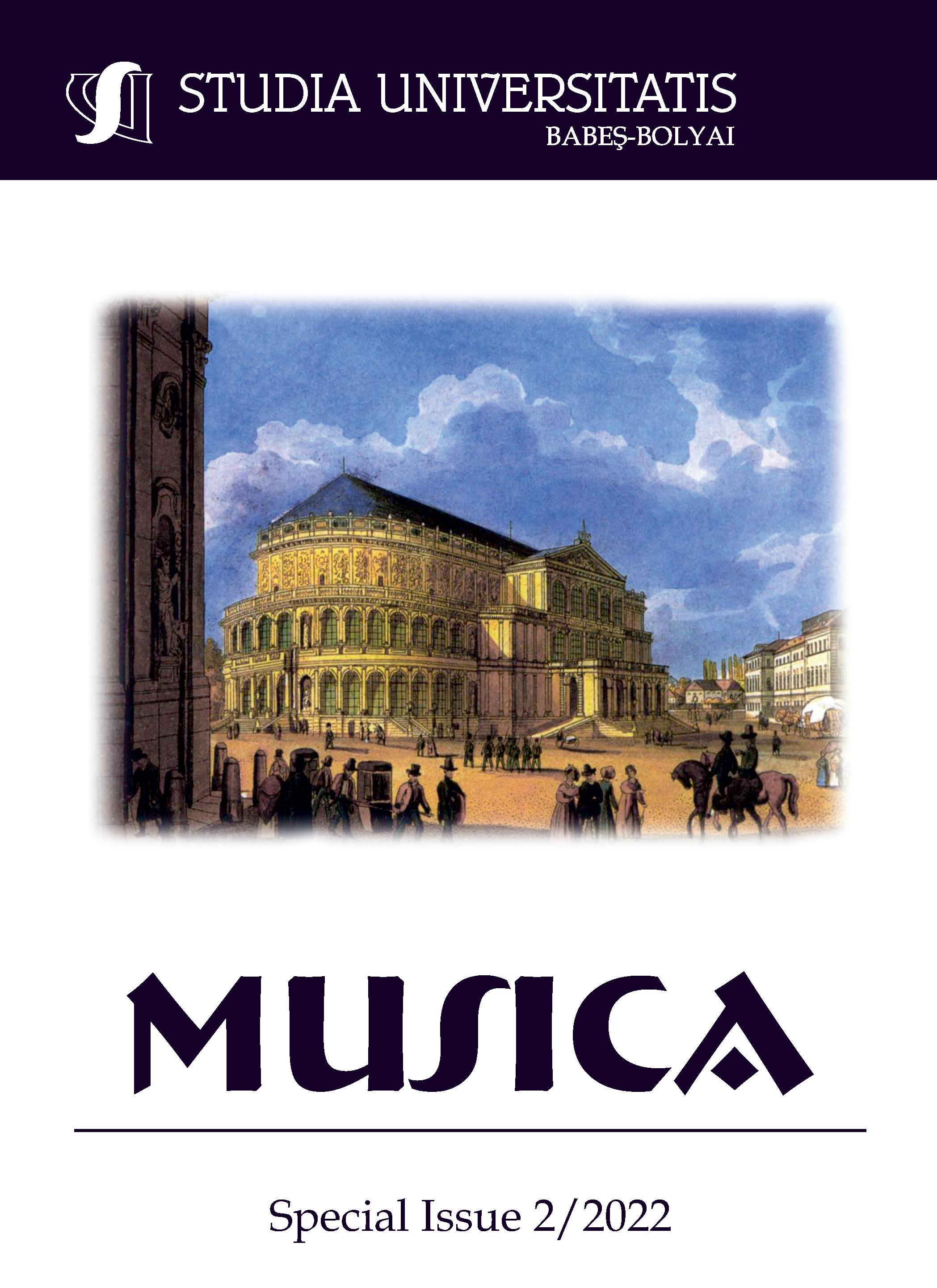CONSTRAINT AND FREEDOM. KODÁLY: “CHILDREN’S DANCES” AND “24 LITTLE CANONS ON THE BLACK KEYS”
DOI:
https://doi.org/10.24193/subbmusica.2022.spiss2.11Keywords:
Kodály method, pentatonic scale, piano pieces, Hungarian folk musicAbstract
The main goal of the article is to examine the constraints and freedom of the composer while using exclusively the notes of the pentatonic scale. For this purpose, we present Kodály’s two piano cycles written on the black keys from different perspectives. In connection with the cycle 24 Little Canons on the Black Keys the use of one-line letter notation pieces in solfege lessons will be introduced. From the other cycle, Children’s Dances, we analyze pieces in which elements from Hungarian folk music or verbunkos can be detected.
References
Bartók, Béla. Mi a népzene? (What is Folk Music?) Budapest, lecture, 1931.
Csüllög, Judit. A népdal szerepe a kezdők zongoraoktatásában Magyarországon. (The Role of the Folksong in Teaching Piano to Beginners in Hungary.) Eger, Líceum Kiadó, 2009.
Dobszay, László. A Kodály-módszer és zenei alapjai (The Kodály Method and its Musical Basis). Parlando 10, no.11 (1970): 15–26.
Dobszay, László. A szolmizáció (Solmisation] Parlando 3, no.7–8 (1961): 17.
Dobszay, László. Kodály Zoltán zenepedagógiai eszméi és népzenekutatásunk (Kodály’s Ideas on Music Pedagogy and Folk Music Research in Hungary) Parlando 24, no.2 (1968): 3–10.
Dobszay, László. A magyar dal könyve. (The Book of the Hungarian Song). Budapest, Zeneműkiadó, 1984.
Ittzés, Mihály. 22 zenei írás. (22 Writings on Music). Kecskemét, Kodály Intézet, 1999.
Kodály, Zoltán. A magyar karének útja (The Path of Hungarian Choral Singing) In: Visszatekintés (Retrospect] vol. I., edited by Ferenc Bónis, 53. Budapest, Zeneműkiadó Vállalat, 1982.
Kodály, Zoltán. Megjegyzések a ‘Szó-Mi’ népiskolai énektankönyv bírálóinak viszontválaszára (Remarks on the Latest Reply from the Critics of the ‘Sol-Mi’ Music Coursebook for General Education) In: Visszatekintés (Retrospect] vol. I., edited by Ferenc Bónis, 152. Budapest, Zeneműkiadó Vállalat, 1982.
Kodály, Zoltán. Százéves terv (A Hundred Year Plan). In: Visszatekintés (Retrospect) vol. I., edited by Ferenc Bónis, 288–289. Budapest, Zeneműkiadó Vállalat, 1982.
Kodály, Zoltán. A magyar népdal művészi jelentősége (The Artistic Significance of the Hungarian Folksong.) In: Visszatekintés (Retrospect) vol. I., edited by Ferenc Bónis, 35. Budapest, Zeneműkiadó Vállalat, 1982.
Kodály, Zoltán. Vidéki város zeneélete (Music Life of a Rural Town] Nyíregyháza, lecture, 1937.
Kodály, Zoltán. A magyar hangszertanítás. (Instrumental Music Education in Hungary) In: Visszatekintés (Retrospect) vol. III., edited by Ferenc Bónis. Budapest, Zeneműkiadó Vállalat, 1989.
Kodály, Zoltán. Gyermektáncok zongorára. (Children’s Dances) Budapest, Editio Musica, 1947.
Kodály, Zoltán. 24 kis kánon a fekete billentyűkön – Előszó. (24 Little Canons on the Black Keys – Foreword). Budapest, Zeneműkiadó Vállalat, 1961.
Kodály, Zoltán. Tizenkét kis darab zongorára. (Twelve Little Pieces for Piano). Budapest, Editio Musica, 2015.
Kodály, Zoltán. A magyar népzene. (Hungarian Folk Music). Budapest, Zeneműkiadó, 1971.
Kodály, Zoltán. Galántai táncok zongorára. (Dances of Galánta for Piano). Budapest, Editio Musica, 1970.
Kodály, Zoltán. Galántai táncok zenekarra. (Dances of Galánta for Orchestra). Vienna: Universal Edition, 1935.
Boguszlavszkijné, Kocsis Márta, ed. Népzeneismeret. (Folk music). Eger: Líceum Rota IGM, 1988.
Ujfalussy, József. Zeneoktatás és nemzeti hagyomány (Music Education and National Tradition) in Parlando 26, no.1 (1984): 6–16.
Várady, Krisztina. Dobszay László: A hangok világa c. szolfézskönyv-sorozat alkalmazása a zeneiskolákban (Using László Dobszay’s The World of Tones Solfege Book Series in Music Schools.) PhD dissertation, UKF Nitra, 2008.
Vargyas, Lajos. A magyarság népzenéje. (Folk Music of the Hungarians). Budapest, Zeneműkiadó, 1983.
Downloads
Published
How to Cite
Issue
Section
License
Copyright (c) 2022 Studia Universitatis Babeș-Bolyai Musica

This work is licensed under a Creative Commons Attribution-NonCommercial-NoDerivatives 4.0 International License.






